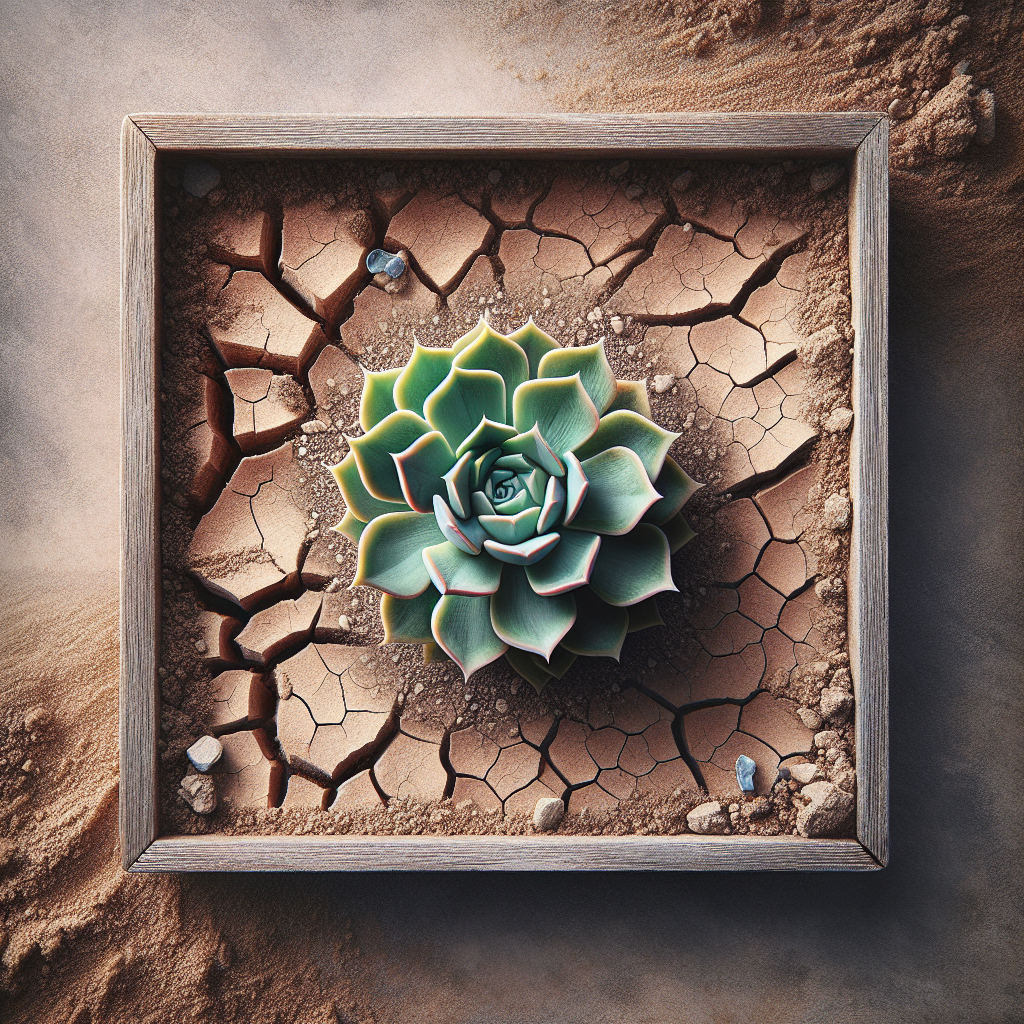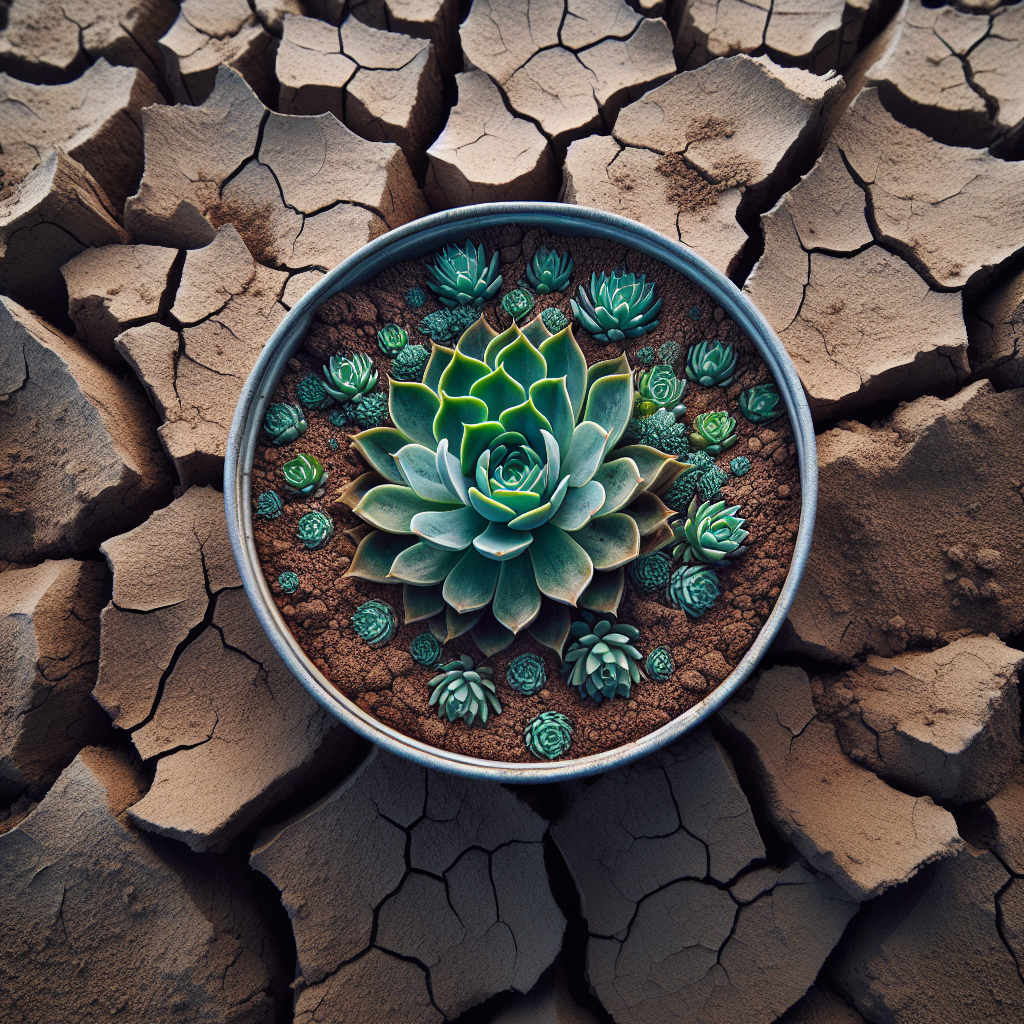
If you’re facing the challenge of gardening in dry soil, don’t fret! With the right tips and techniques, you can still achieve a thriving container garden. This article offers valuable insights and strategies to help you succeed in container gardening, even in the face of drought conditions. Whether you’re a seasoned gardener or a complete beginner, these tips will surely come in handy as you embark on your container gardening journey in dry soil. So grab your gardening gloves and get ready to bring life to your pots and planters!

Choosing the Right Containers
When it comes to container gardening in dry soil, selecting the appropriate containers is crucial. The size of the containers plays a significant role in the success of your plants. Larger containers tend to retain more moisture, which is essential when dealing with dry soil. Additionally, bigger pots provide more room for the plants to grow, allowing for better root development.
Apart from size, drainage is another essential factor to consider when choosing containers for dry soil gardening. Without proper drainage, excess water can accumulate, leading to root rot and other issues. Look for containers that have drainage holes at the bottom to ensure that water can easily escape.
Furthermore, the material of the containers can also impact moisture retention. Opt for containers made from materials that can help retain moisture, such as terracotta or glazed ceramic. These materials are porous and can absorb and store water, providing a more favorable environment for your plants.
Selecting Suitable Plants
Choosing plants that are well-suited for dry soil conditions is essential for thriving container gardens. Drought-tolerant plant species are your best bet as they are naturally equipped to endure periods of low water availability. Some popular choices for container gardening in dry soil include lavender, succulents, rosemary, and yucca.
Another factor to consider when selecting plants is their root systems. Opt for plants with shallow root systems, as they are better able to access water in the upper layers of soil. This is especially important when dealing with dry soil, as deeper layers are often void of moisture.
Succulents and cacti are excellent choices for container gardening in dry soil due to their ability to store water in their leaves or stems. These plants have adapted to arid conditions and can thrive with minimal water. Their unique features and attractive appearances make them ideal additions to any container garden.

Prepping Soil for Planting
Preparing the soil before planting is vital to ensure optimal moisture retention for your container plants. Enhancing soil moisture retention can be done through several techniques. One effective method is to mix organic matter, such as compost or well-rotted manure, into the soil. This not only improves soil structure but also enhances its ability to retain moisture.
Another option to consider is using water-absorbent polymers. These polymers can absorb water and release it slowly over time, providing a consistent moisture source for your plants. Incorporating the polymers into the soil at the time of planting will help create a reservoir of water for the roots to access.
Amending the soil with organic matter and utilizing water-absorbent polymers are excellent strategies for combating dry soil conditions and promoting healthy plant growth in containers.
Watering Techniques
Proper watering techniques are crucial in container gardening, especially when dealing with dry soil. Establishing a proper watering schedule is key to avoid overwatering or underwatering your plants. Take into account the specific water requirements of your plants and the prevailing weather conditions. Adjust the frequency and duration of watering accordingly.
When watering container plants in dry soil, it’s best to water deeply and less frequently rather than shallowly and often. This encourages the plants’ roots to grow deeper, accessing water from lower layers of soil. Watering deeply also ensures that the entire root ball receives adequate moisture, promoting optimal growth.
Consider using drip irrigation systems for efficient and precise watering. Drip irrigation delivers water directly to the roots of the plants, reducing water loss through evaporation and ensuring efficient water distribution. This method is particularly beneficial in container gardening, as it minimizes water waste and allows for better control over moisture levels.

Mulching for Moisture Conservation
Mulching is an effective technique for conserving moisture in container gardens. By applying organic mulch, such as wood chips or straw, to the soil surface, you can help prevent evaporation and retain moisture in the soil. Mulch acts as a protective layer, shielding the soil from direct sunlight and reducing water loss through evaporation.
When choosing mulch materials for container gardening in dry soil, opt for organic options that break down over time, improving soil structure and fertility. Avoid using inorganic mulches like rocks or plastic, as they can trap heat and lead to increased soil temperature, exacerbating dry conditions.
Maintaining the proper mulch thickness is essential for maximizing moisture retention. Apply a layer of mulch approximately two to three inches thick around your container plants, ensuring that the base of the plants is not covered to prevent potential issues with root rot.
Providing Adequate Shade
Creating adequate shade for your container plants can help mitigate the effects of dry soil conditions. Using larger containers allows for more space to incorporate shade-providing elements. Consider placing containers strategically in areas that receive partial shade for a portion of the day, providing relief from intense sunlight.
In addition to natural shade, you can utilize shade cloth or umbrellas to create artificial shade for your plants. These shade-providing materials can be easily positioned above your containers to shield the plants from direct sunlight during peak heat hours. By reducing sun exposure, you can minimize moisture loss due to evaporation and create a more favorable environment for your plants.

Using Hydrogels for Water Retention
Hydrogels are a valuable tool for water retention in container gardening, especially in dry soil conditions. These water-absorbing polymers can hold a significant amount of water and release it gradually over time, ensuring a consistent moisture supply for your plants.
To properly incorporate hydrogels into the soil, follow the manufacturer’s instructions regarding dosage and application. Generally, you will need to mix the hydrogel crystals or granules with the soil before planting. As you water your plants, the hydrogel material will absorb and hold onto the moisture, releasing it gradually as the soil dries out.
When selecting hydrogels for container gardening in dry soil, consider the specific needs of your plants and the anticipated water requirements. Different hydrogel types may vary in their water-holding capacities and release rates, so choose the one that best suits your gardening needs.
Monitoring Soil Moisture
Monitoring soil moisture levels is crucial in container gardening, especially when dealing with dry soil. Using moisture meters or sensors can provide accurate readings of the soil moisture content, helping you determine when and how much to water your plants.
Additionally, performing a finger test can give you a quick indication of the soil moisture. Simply insert your finger into the soil up to the second knuckle. If the soil feels dry at that depth, it’s a sign that your plants may require watering.
Keep track of weather conditions, as they directly impact soil moisture levels. Hot and dry weather will result in increased evaporation and higher water requirements for your plants. Adjust your watering schedule accordingly to ensure that your container plants receive adequate hydration.

Implementing Effective Drainage
Proper drainage is essential in container gardening, regardless of soil conditions. To enhance drainage in containers, it’s crucial to add drainage holes at the bottom. These holes allow excess water to escape, preventing waterlogging and root rot.
You can further improve drainage by placing a layer of gravel or pebbles at the bottom of your containers. This layer acts as a reservoir for excess water, preventing the plant’s roots from sitting in standing water. Elevating your containers slightly off the ground can also facilitate better drainage, allowing excess water to flow freely.
By implementing effective drainage techniques, you can prevent waterlogged soil and ensure optimal moisture levels for your container plants.
Strategies for Water Conservation
Water conservation is essential in container gardening, particularly in dry soil conditions where water may be scarce. Implementing various strategies can help minimize water usage and promote sustainability in your gardening practices.
One strategy is collecting and reusing water runoff. Position your containers strategically to capture water runoff from rainfall or irrigation. Collect this water in a separate container and reuse it for watering your plants. This approach reduces water waste and maximizes the efficiency of your irrigation efforts.
Harvesting rainwater is another excellent method for conserving water in container gardening. Set up rain barrels or install a rainwater harvesting system to collect rainwater from your roof or other surfaces. You can then use this collected rainwater for watering your plants during dry periods, reducing your reliance on tap water.
Implementing xeriscaping techniques can also contribute to water conservation in container gardening. Xeriscaping involves designing your garden to minimize water usage by selecting drought-tolerant plants, optimizing irrigation methods, and incorporating permeable materials in the garden design. Applying xeriscaping principles to your container gardening practice can help you conserve water and create a sustainable and environmentally-friendly garden.
In conclusion, container gardening in dry soil requires careful consideration and the implementation of specific techniques to ensure the success of your plants. By choosing the right containers, selecting suitable plants, prepping the soil, using appropriate watering techniques, mulching, providing adequate shade, utilizing hydrogels, monitoring soil moisture, implementing effective drainage, and adopting water conservation strategies, you can create a thriving container garden even in challenging dry soil conditions. With patience, proper care, and these helpful tips, you can enjoy the beauty and abundance of container gardening in any environment.





